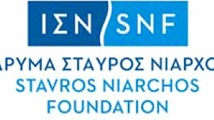Abstract
Proteins and carbohydrate contents of a substrate are two important macronutrients that gives organisms the energy and necessary amino acids that affect their fertility, growth, and development. However, it is often assumed that larval food stress reduces lifetime fitness regardless of the conditions. It is imperative to understand how substrates affects R. phoenicis larval development and adult reproductive performance. To mitigate these challenges that hinder the development and reproductive performance, three different diets were evaluated to assess the effect of different larval substrates on some parameters of Rhynchophorus phoenicis. Larvae were reared on diet A (500 g of rice husk, coconut coir, mango waste and water), B (500 g of rice husk, coconut coir, cocoa pod, and water), and C (500 g of rice husk, coconut coir, palm yolk, and water) and subsequent life history parameters were assessed. Cocooning rate, cocooning duration, and percentage of male and female adults were also evaluated. The emerged adults were sexed based on the presence of a setae on the male’s rostrum which are absent on the female’s rostrum The larval development on the different diets indicated a steady increase in weight gain from day 3 to day 21. The weight gain of the larvae declined after day 24. Survival rate of the larvae was significantly different (P < 0.05) among the substrates with diet C recording 78%. Cocooning and emergence rate were significantly different (P < 0.05) among the substrates. Percentage of male and female adults varied significantly (P < 0.05) among the different diets. Adult that emerged from diet C had a higher fecundity than those that emerged from the other substrates. It is therefore recommended that diets with similar characteristics of the natural host plant (oil palm yolk) should be adopted for the production of R. phoenicis larvae.


Similar content being viewed by others
Data availability
Data will be available upon request.
Code availability
Not applicable.
References
Akpanabiatu MI, Ekpa OD, Mauro A, Rizzo R (2001) Nutrient composition of nigerian palm kernel from the dura and tenera varieties of the oil palm (Elaeis guineensis). Food Chem 72(2):173–177
Al-Ayedh H (2008) Evaluation of date palm cultivar for the red date palm weevil, Rhynchophorus ferrugineus (Coleoptera, Curculionidae). Fla Entomol 91(3):353–358
Asomah S, Anankware PJ, Debrah SK, Obeng-Ofori D (2023) Evaluation of different substrates on the life history parameters of african palm weevil, Rhynchophorous phoenicis (Coleoptera: Curculionidae) in Ghana. Cogent Food Agric 9(1):2232170
Atuahene CC, Adjei MB, Adu MA, Quaye B, Opare MB, Benney R (2017) Evaluating the potential of edible insects (Palm Weevil- Rhynchophorus phoenicis larvae) as an alternative protein source for humans. J Anim Sci Adv 7(3):1897–1901
Avand-Faghih A (1996) The biology of red palm weevil, Rhynchophorus ferrugineus (Olivier) (Coleoptera: Curculionidae) in Saravan region (Sistan and Balouchistan Province, Iran). J Appl Entomol Phytopathol 63:16–18
Bava L, Jucker C, Gislon G, Lupi D, Savoldelli S, Zucali M, Colombini S (2019) Rearing of Hermetia illucens on different organic by-products: influence on growth, waste reduction, and environmental impact. Animals 9(6):289
Birah A, Chilana P, Shukla UK, Gupta GP (2008) Mass rearing of greater wax moth (Galleria mellonella) on artificial diet. Indian J Entomol 70:389–392
Bong CJ, ER C, Yiu P, Rajan A (2008) Growth performance of the red-stripe weevil Rhynchophorus schach Oliv. (Coleoptera: Curculionidae) on meridic diets. Am J Agric Biol Sci 3(1):403–409
Chandel YS, Sharma S, Verma KS (2003) Comparative biology of the greater wax moth, Galleria mellonella L., and lesser wax moth, Achoria grisella. For Pest Manag Econ Zool 11:69–74
Chapman T, Partridge L (1996) Female fitness in Drosophila melanogaster: an interaction between the effect of nutrition and of encounter rate with males. Proc R Soc Lond Series B Biol Sci 263(1371):755–759
Coskun M, Kayis T, Ozalp P, Kocalar K, Tatlicioglu CI, Emre I (2009) The effects of a meridic diet on the sex ratio of offspring, on glycogen and protein content, and on productivity and longevity of adult Pimpla turionellae (Hymenoptera: Ichneumonidae) for five generations. Belg J Zool 139(2):103–108
Debrah SK (2016) Edible insect as a traditional food source among the Akans in Southern Ghana. University of Ghana, Accra, Ghana
Debrah SK, Anankware PJ, Asomah S, Ofori DO (2022a) Challenges associated with Rhynchophorus phoenicis Fabricius (Coleoptera: Curculionidae) farming: a case study of the Ejisu-Juaben Municipality. J Insects Food and Feed 9(1):15–24
Debrah SK, Anankware PJ, Asomah S, Ofori DO (2022b) Substrates: a solution to the mass production of African palm weevil (Rhynchophorus phoenicis) (F.) (Coleoptera: Curculionidae). J Insects Food Feed 9(3):381–388
Kaakeh W (2005) Longevity, fecundity, and fertility of the red palm weevil, Rynchophorus ferrugineus Olivier (Coleoptera: Curculionidae) on natural and artificial diets. Emir J Food Agric 23–33
El-Shafie H, Faleiro JR, Abo-El-Saad MM, Aleid SM (2013) A meridic diet for laboratory rearing of red palm weevil, Rhynchophorus ferrugineus (Coleoptera: Curculionidae). Sci Res Essays 8(39):1924–1932
Fowles TM, Nansen C (2020) Insect-based bioconversion: value from food waste. In Food waste management Palgrave Macmillan, Cham, 321–346
Giblin-Davis RM, Howard FW (1989) Vulnerability of stressed palms to attack by Rhynchophorus cruentatus (Coleoptera: Curculionidae) and insecticidal control of the pest. J Eco Entomol 82(4):1185–1190
Guazzugli MA, Campadelli G (1976) Prove di selezione di popolazioni non soggette a diapausa del Lepidottero Galleria mellonella L. Bollett dell’Istituto di Entomol dell’Universita degli. Studi di Bologna 32:153–168
Joern A, Provin T, Behmer ST (2012) Not just the usual suspects: insect herbivore populations and communities are associated with multiple plant nutrients. Ecol 93(5):1002–1015
Kaakeh W (2005) Longevity, fecundity, and fertility of the red palm weevil, Rynchophorus ferrugineus Olivier (Coleoptera: Curculionidae) on natural and artificial diets. Emir J Food Agric 17:23–33
Kaakeh W, Abou-Nour MM, Khamis AA (2001) Mass rearing of the red palm weevil, Rhynchophorus ferrugineus Oliv., on sugarcane and artificial diets for laboratory studies: illustration of methodology. In: Proceedings of the second international conference on date palm, Al-Ain, UAE, pp 344–357
Kulkarni N, Kushwaha DK, Mishra VK, Paunikar S (2012) Effect of economical modification in artificial diet of greater wax moth Galleria mellonella (Lepidoptera: Pyralidae). Indian J Entomol 74(4):369–374
Lencioni V (2004) Survival strategies of freshwater insects in cold environments. J Limnol 63(1):45–55
Liu C, Masri J, Perez V, Maya C, Zhao J (2020) Growth performance and nutrient composition of mealworms (Tenebrio Molitor) fed on fresh plant materials supplemented diets. Foods 9–151
Lundy ME, Parrella MP (2015) Crickets are not a free lunch: protein capture from scalable organic side-streams via high-density populations of Acheta domesticus. PLoS ONE 10:e0118785
Matsumoto M, Osaki M, Nuyim T, Jongskul A, Eam-on P, Kitaya Y, Tadano T (1998) Nutritional characteristics of sago palm and oil palm in tropical peat soil. J Plant Nutr 21(9):1819–1841
Monzenga Lokela JC, Le Goff G, Bundo K, Hance T (2017) Influence of substrates on the rearing success of Rhynchophorus phoenicis (F). African J Food Sci Technol 81 – 7.
Okai DB, Abora PKB, Davis T, Martin A (2005) Nutrient composition, availability, current and potential uses of dusa, a cereal by-product obtained from koko (porridge) production. J Sci Technol 25(1):33–41
Okamoto N, Yamanaka N (2015) Nutrition-dependent control of insect development by insulin-like peptides. Curr Opin Insect 11:21–30
Quaye B, Atuahene CC, Donkoh A, Adjei BM, Opoku O, Amankrah MA (2018) Preliminary study to evaluate the rate of emergence of adult African palm weevils (Rhynchophorus phoenicis) on different substrates. Ghana J Anim Sci 9(1):66–70
Rananavare HD, Shantaram K, Harwalkar MR, Rahalkar GW (1975) Method for the laboratory rearing of red palm weevil, Rhynchophorus ferrugineus Oliv. J Plantation Crops 3(2):65–67
Scala A, Cammack JA, Salvia R, Scieuzo C, Franco A, Bufo SA, Falabella P (2020) Rearing substrate impacts growth and macronutrient composition of Hermetia illucens (L.) (Diptera: Stratiomyidae) larvae produced at an industrial scale. Sci Rep 10(1):1–8
Wathes DC, Abayasekara DRE, Aitken RJ (2007) Polyunsaturated fatty acids in male and female reproduction. Biol Reprod 77(2):190–201
Wehry GJJ, Little DC, Newton RW, Bostock J (2022) The feasibility of underutilised biomass streams for the production of insect-based feed ingredients: the case for whisky by-products and scottish farmed salmon. Clean Engin Tech 9:100520
Acknowledgements
The authors are grateful to the HEALTHYNSECT PROJECT and DANIDA for providing support to carry out this study.
Author information
Authors and Affiliations
Contributions
Joshua Kpakpo Hermann conducted experiments and collected data. Shadrack Kwaku Debrah planned the experiments. Joshua KpaKpo Hermann and Shadrack Kwaku Debrah wrote the manuscript and Jacobe Paarechuga Anankware and Daniel Obeng Ofori refined the concept and edited the final manuscript prior to submission.
Corresponding author
Ethics declarations
Ethics approval
Not applicable.
Competing interests
There is no conflict of interest among the authors.
Additional information
Publisher’s Note
Springer Nature remains neutral with regard to jurisdictional claims in published maps and institutional affiliations.
Rights and permissions
Springer Nature or its licensor (e.g. a society or other partner) holds exclusive rights to this article under a publishing agreement with the author(s) or other rightsholder(s); author self-archiving of the accepted manuscript version of this article is solely governed by the terms of such publishing agreement and applicable law.
About this article
Cite this article
Hermann, J.K., Debrah, S.K., Anankware, J.P. et al. Evaluation of different larval substrates on selected parameters of african palm weevil (Rhynchophorus phoenicis) (F.) (Coleoptera: Curculionidae). Int J Trop Insect Sci 43, 2039–2044 (2023). https://doi.org/10.1007/s42690-023-01090-8
Received:
Accepted:
Published:
Issue Date:
DOI: https://doi.org/10.1007/s42690-023-01090-8




